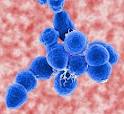Streptococcus agalactiae (Group B Streptococcus, GBS) is a commensal of the digestive and genitourinary tracts of humans that emerged as the leading cause of bacterial neonatal infections in Europe and North America during the 1960s. Since this time GBS have lost genetic diversity, and show high rates of tetracycline resistance. The puzzle is that tetracycline is not used to treat GBS. Nevertheless, since the 1950s, most GBS clones were wiped out by the collateral effects of the widespread use of tetracycline and other antibiotics, even though they were not the treatment target. In this months edition of Nature Communications Da Cunha et al. show that a few GBS clones survived by virtue of their persistence, and these clones also acquired mobile genetic elements carrying a mixture of antibiotic resistance genes, including those for tetracycline resistance.
